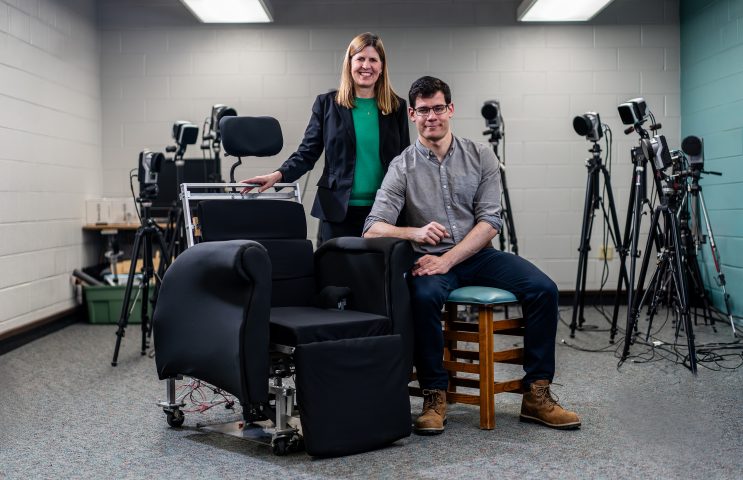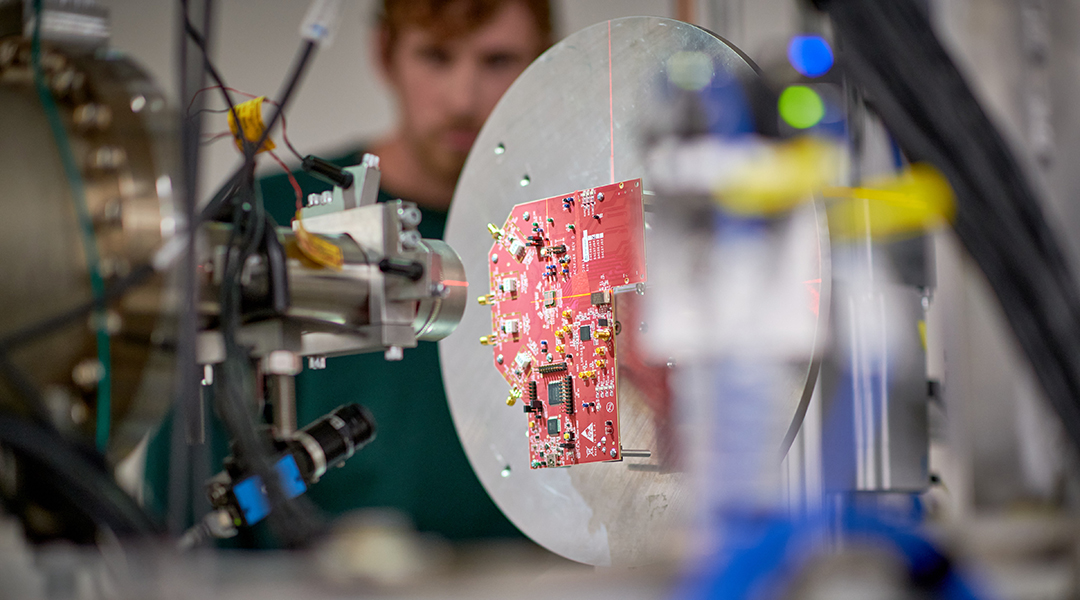Some of the most impactful technologies often aren’t the ones you see. They seamlessly make their way into our day, making life safer, healthier and more sustainable.
At Michigan State University, a top 40 U.S. university for its number of utility patents, Spartan researchers are designing and delivering those very innovations. As a result of years of work, they’re improving health care outcomes, creating more sustainable packaging, making artificial intelligence more accessible for all, and advancing the nation’s semiconductor and aerospace infrastructure.
These efforts would not be possible without funding from federal agencies and other sources. With funding from agencies like the U.S. Department of Energy and National Science Foundation and others, Spartans are developing technologies that power a stronger Michigan, a more accessible society and a better quality of life for Americans.
Solving a health concern for vulnerable patients
In hospitals, nursing homes and assisted-living facilities, limited mobility is one of the biggest threats to patient health. With about 2 million people currently living in these settings, there is an increased risk of preventable injuries and illnesses, including pressure sores, which can form when individuals remain in the same position for extended periods without movement.
That’s where Sit Sense comes in. Developed by Tamara Reid Bush, associate dean for inclusion and diversity and professor of mechanical engineering, and Justin Scott, a research associate in the College of Engineering, Sit Sense is a patented technology that automatically identifies high-pressure regions on the body and repositions patients accordingly, with particular attention to high-risk, pressure-prone areas like the buttocks and lower and upper back. The technology means the chair automatically moves based on timing and sensors, offering different posture supports for the patient with repositioning adjustments as frequently as every 20 minutes.
“I went into biomechanics to make a difference in the world and make a difference in people’s lives, and I see this as a really strong possibility of making that happen,” says Reid Bush. “Not all innovations make it beyond the lab, but Sit Sense has the potential to improve the lives of countless people — from patients and caregivers to aging adults and those in specialized occupations. That’s what inspires me.”
In partnership with the federal government, Spartan researchers drive lifesaving breakthroughs and address society’s most pressing challenges.
Supported by an NSF Partnership for Innovation grant, Reid Bush and her team were able to hire undergraduate students to assist on the project. The work is a direct lineage from prior NSF-supported research under National Science Foundation grant. Currently, the researchers are working with nurses in Michigan hospitals to ensure the device is user-friendly. One day, Sit Sense could be deployed in hospitals, nursing homes, clinical therapy settings and dialysis centers as well as be used by individuals with prosthetics or those who work in occupations that require long hours of sitting.
Read more on MSUToday.





